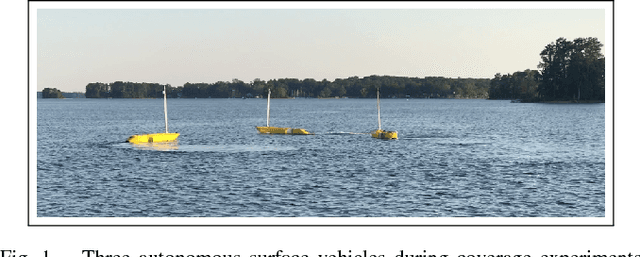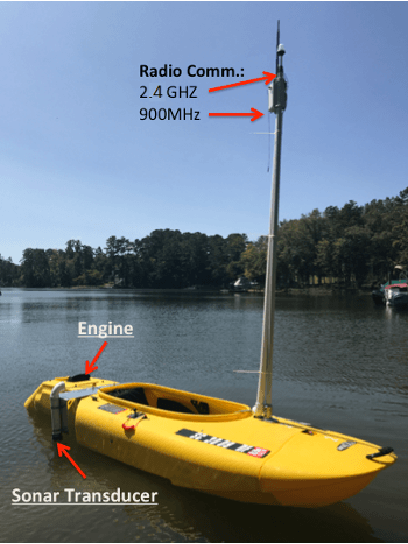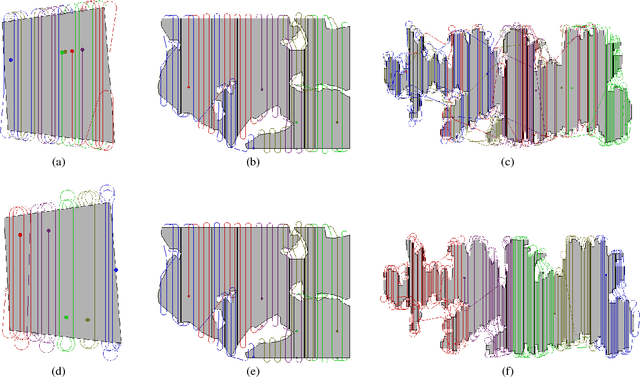Multi-robot Dubins Coverage with Autonomous Surface Vehicles
Paper and Code
Aug 07, 2018



In large scale coverage operations, such as marine exploration or aerial monitoring, single robot approaches are not ideal, as they may take too long to cover a large area. In such scenarios, multi-robot approaches are preferable. Furthermore, several real world vehicles are non-holonomic, but can be modeled using Dubins vehicle kinematics. This paper focuses on environmental monitoring of aquatic environments using Autonomous Surface Vehicles (ASVs). In particular, we propose a novel approach for solving the problem of complete coverage of a known environment by a multi-robot team consisting of Dubins vehicles. It is worth noting that both multi-robot coverage and Dubins vehicle coverage are NP-complete problems. As such, we present two heuristics methods based on a variant of the traveling salesman problem -- k-TSP -- formulation and clustering algorithms that efficiently solve the problem. The proposed methods are tested both in simulations to assess their scalability and with a team of ASVs operating on a lake to ensure their applicability in real world.
 Add to Chrome
Add to Chrome Add to Firefox
Add to Firefox Add to Edge
Add to Edge